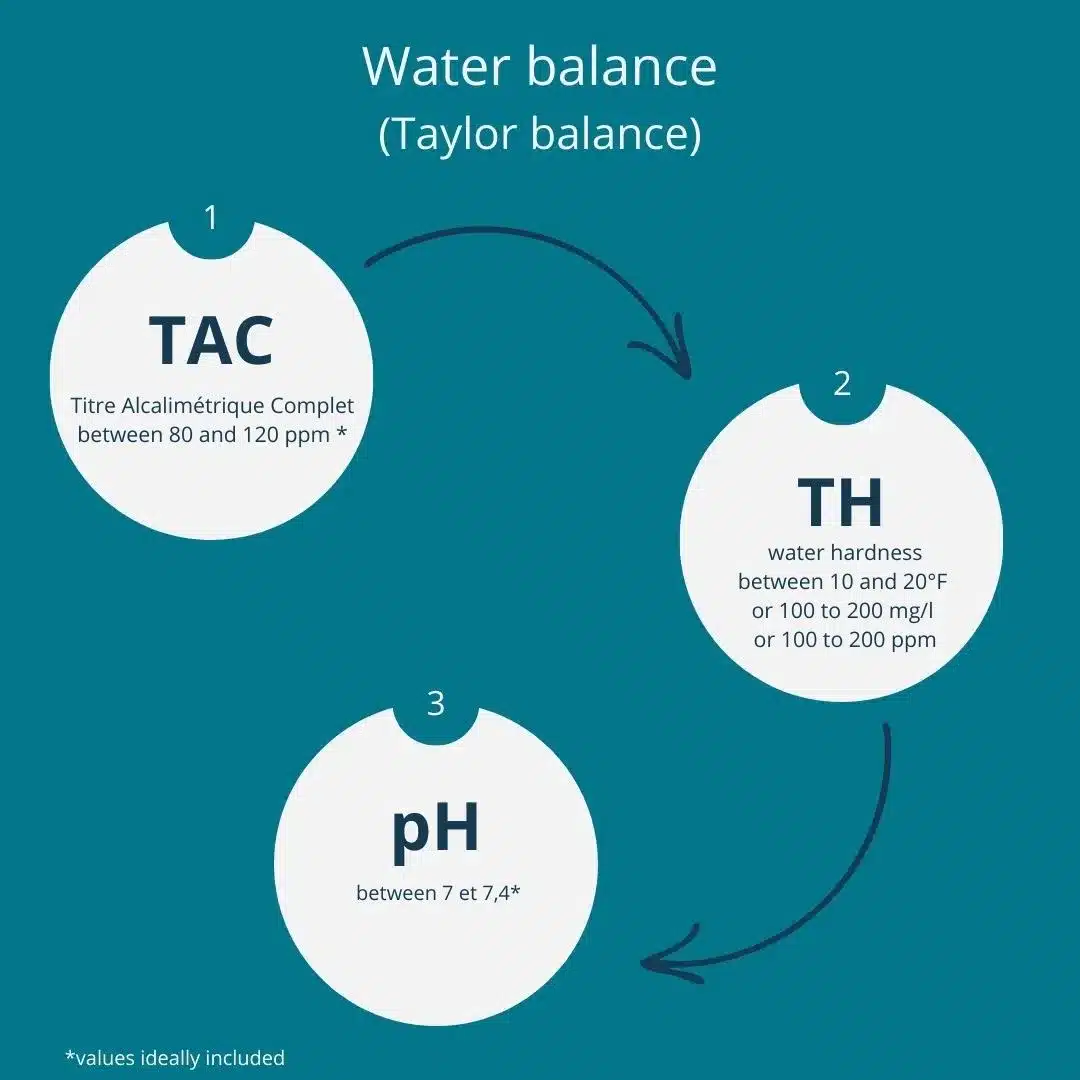Balance your spa water by taking into account 3 parameters: pH, alkalinity (TAC) and hardness (TH). It's important to achieve this balance, as it guarantees optimum efficiency of chemical products, preservation of equipment and perfect bathing quality.

To know if your water is balanced, you need to regularly analyze three indicators in your spa.

The pH is the value that indicates the concentration of hydrogen ions. The pH scale varies from 0 to 14: ideally, the water in your spa should have a pH of between 7 and 7.4. These are the optimum values for water disinfection. In other words, if the pH measured is slightly lower or higher (-/+ 0.4) than these values, there is no need to systematically resort to chemical treatment. Read our article all about pH for more informations.
To know the pH value in your spa water, there are chemical testers such as disposable strips or electronic ones like the pH meter or connected pH probes like ICO SPA. The reliability of the results depends on the pH tester you use. To find out more, you can read an article comparing the pH testers available on the market.
The TAC (Titre Alcalimétrique Complet) measures the concentration of carbonate and bicarbonate ions to determine the alkalinity of the water. This measurement indicates the water's capacity to absorb pH fluctuations and stabilize it. The unit of measurement for TAC is the ppm (part per million) or the French degree (°f), and it should vary optimally between 80 and 120 mg/l. By regulating your water's TAC level (TAC+ or TAC-), you can "buffer" your water. All about water alcaninity.
Finally, you should know that when your spa is drained quarterly, the TAC increases naturally (up to 220 mg/l), then stabilizes naturally as filtration is activated. So there's no need to intervene to correct the TAC in the first few hours.
Water alkalinity can be measured with colorimetric strips or with electronic testers (photometers) used by professionals. Measuring TDS with a dedicated probe (Total Dissolved Solids in Water) is recommended, as it will give you the value of all the ions present in the water - including TAC. Everything you need to know about TDS, TAC and TH.
The hardness of water is called TH, and refers to the concentration of calcium or magnesium ions. It is measured in French degrees (°F) or in ppm. The ideal TH is between 10 and 20°F (100 or 200 mg/l or ppm). The higher the TH, the harder and more calcareous the water. Conversely, the lower the TH, the softer the water. All about water hardness.
Colorimetric bands for TH are commercially available.
When the water is too soft (TH is low, below 10°f), first adjust the pH using TH+. You can also use calcium hypochlorite. Finally, activate your spa's filtration cycle. Finally activate a filtration cycle for your spa.
If the water is too hard (high TH, above 20°f), correct the pH with pH- then activate filtration. You can add a lime sequestering product to slow down lime formation.
There are a number of factors that can affect the quality of the water in your spa, such as its environment (indoor or outdoor spa), the number of people using it and how often it is used.
First of all, it's important to adapt the number of analyses to external factors in order to monitor the quality of your spa water. If you use your spa regularly, you should measure the minimum parameters once a week. Next, regular maintenance of your spa is essential to maintain water quality and preserve your equipment.